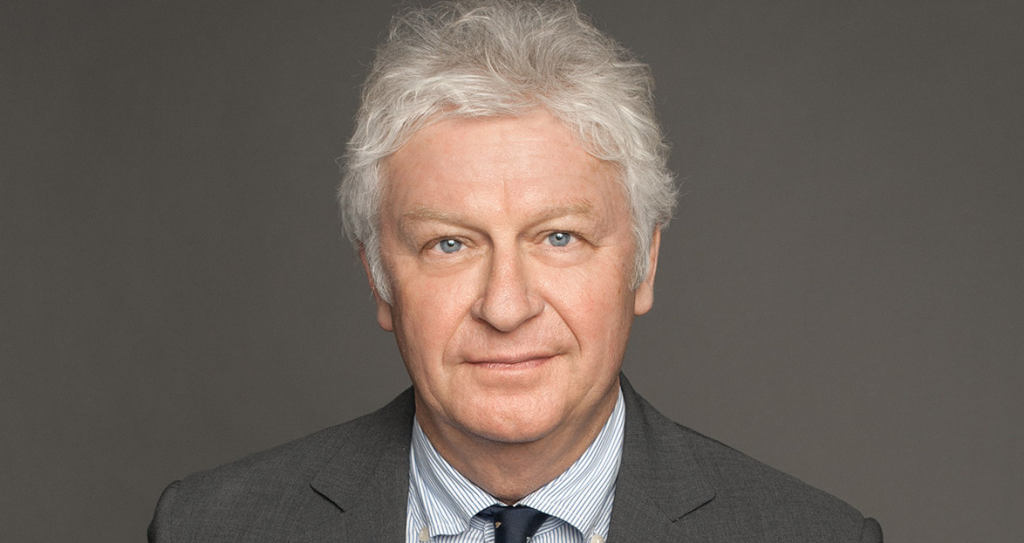Industry chiefs Brett Cottle, Dan Rosen, Kim Tran talk biz at Music Roundtable

The health of the Australian music industry was prodded and probed for the “state of the industry” session at the Contemporary Music Roundtable in Sydney, a session which featured three key players in the music biz.
Facilitated by TIO’s Lars Brandle, the panel of Brett Cottle, CEO of APRA and AMCOS; Dan Rosen, CEO of ARIA and PPCA; and LPA’s Kim Tran, Director, Policy & Programs, explored the industry and its issues, and where things are heading.
In a nutshell, the performing rights sector has never been stronger, the recording industry after years of sharp, troubling decline is finally on the way back, while live entertainment, after a long, hot stretch, is cooling off. As Meat Loaf might say, two out of three ain’t bad. Below is a transcript of the panel discussion.
Brett Cottle:
It is difficult to draw any conclusion other than that the industry is back in boom times, from the kinds of figures that I will refer to today. There are roughly three points I would like to make. The first is that digital revenue for songwriters and publishers is almost now at the level of revenue from the broadcast sector.
In the year to 30 June 2017, we will be reporting across APRA and AMCOS digital revenue of $110 million. Included in digital are subscription and ad driven streaming services, digital downloads, video on demand and user generated content.
The combined figure across those businesses this year will be $110 million. The figure from broadcasting this year, including all radio and television, across Australia and NZ will be $125 million. By way of indicating how we have travelled, two years ago digital revenue was $48 million and broadcast revenue was $122 million.
So over the past two years revenue from digital has risen a net 130% whereas revenue from broadcasting has increased 5%. Now you can draw all sorts of conclusions about that, but I think one of the interesting conclusions you can draw, is that despite the tsunami of digital services that has well and truly taken hold in Australia and New Zealand, its remarkable that the broadcast business has shown such resilience.
The second point is that the growth in subscription streaming services has far out-stripped the decline in digital downloads. And again, two years ago, where we were looking at a subscriber base in Australia of under one million, I think the big question was, will we see the death of digital downloads and will streaming take up the slack? Well in the subsequent two years, revenue for our sector of the business – the publishing side of the business – from digital downloads has declined from $28 million to $17 million, while subscription revenue has surged from $11.5million to $62 million.
So the rate of growth is streaming is five times the rate of decline in the digital download market. So that battle has been well and truly won, at this stage.

Brett Cottle, exiting CEO at APRA AMCOS
The third point I want to make is that every consumer or advertising dollar that shifts from the traditional broadcast platform to a digital platform is good for copyright owners as a group but not so good for local songwriters or content producers and there are two factors that underpin that statement.
The first is that royalty rates for content owners, certainly music content owners, are generally better than they ever were in the analogue world. The rates of royalties paid by the streaming services are for example much higher than the rates of royalty paid by traditional radio broadcasters.
The share of the revenue pie that is generated that goes to content owners and writers is much better in digital than it is in analogue, but because of the globalisation and the globalised nature of the digital services, I think the whole notion of local content and local content regulation is at risk of redundancy – and that is hard for local writers and the local industry generally.
It is worth noting that we have a very well-developed system of paying royalties for live performances in Australia to our writer members and we are kind of proud of the system of payments to our writer members for their live performances and over the past two years, the amount that we’ve paid out for live performances from live venues, not in a concert setting in Australia, has gone from $3.8 million to $6 million.
So whereas two years ago we were paying out $1.81 per work, per performance, we are now paying out $2.70 per work, per performance. And 6200 writers, throughout Australia and NZ receive an allocation on that basis for live performances of their works.
But – and this is the interesting punch line – about double the number of our writer members receive earnings from foreign performances during the year than receive earnings from local performances of live music.
So it means that an awful lot of Australian writers are getting performances whether they are on radio or TV around the world in the most obscure territories, who are not necessarily playing their songs or having other people play their songs live in this territory. And I think nothing illustrates better the global nature of the business we now operate in.
Dan Rosen:
I echo Brett’s optimism I think, we are in a really exciting phase of the business again and it is great to see growth return to the market. We have some figures here, but we also have to put that in context of where we have come from. If we look back at revenues of the recorded industry business from 1999 to 2014, effectively the business halved in those 15 years, the positive is these are the global figures that we are starting to grow again.
The global business was up 6% last year; the US market was up 11% last year. US being a strong bellwether of where the rest of the world is going, so yes there is optimism but we still have a long way to go from where we were back in the late 90s. Also as Brett was saying, I agree that it is really streaming that has been driving that growth. And we see the growth in streaming over the last five years has been quite phenomenal.
To think that the biggest revenue stream for our business didn’t exist five years ago, demonstrates the pace of change and also the innovative nature of the music business and it’s something that we spent a lot of time in Canberra between APRA AMCOS and ourselves trying to educate policy makers that the music business is not an old economy business, it is actually part of the new world. And being one of the industries that first went into digital disruption, it is one of the first businesses coming out the other side. And the fact that our largest revenue stream didn’t even exist 5 years ago just shows that we are embracing change and embracing innovation and technology.

Dan Rosen, CEO ARIA and PPCA
It is a very important message to get out from the music business that we are a digital business and we are an innovative business. If we look at the Australian numbers, the last three years have been incredibly positive after fifteen years effectively of decline. The last two years we have seen growth come back to the recorded music side of the business.
Two years in a row effectively 6% growth. So last year we were up over $350 million, coming from about $315million back in 2014. And it has really been streaming that has been driving that growth. In 2012 streaming didn’t exist. It went from 10% in 2014 to 21% in 2015, to 40% in 2016. So streaming has quadrupled its share in two years. It’s a remarkable pace of change. And again, as the APRA numbers has brought out, that has really been at the expense of the download market.
The physical market has declined, but the growth in streaming has really come at the expense of downloads, but because the overall pie is growing, the growth in streaming has been more than offsetting the decline of digital download.I think both Spotify and Apple Music have done an incredible job at convincing the market to take up subscription services.
Apple Music’s partnership with Telstra is a massive boost for the country, it was the first time that Apple Music partnered with a Telco anywhere in the world and that ability to access 16 million mobile phone customers with Telstra is a huge opportunity for the music business. They have done an okay job at getting the first million over the line, but if we can get 20 or 30% of Telco customers paying for music we are going to be in an incredibly strong position going forward.
This is the other nice story, admittedly it is still a niche part of the market, but the rise of vinyl has really been a good news story. I think I do more radio and print interviews on this than anything else because I think every radio journalist or print journalist sees that vinyl is back and they might keep their job for five more years.
But the rise of vinyl has been quite remarkable and we have seen that it has been doubling year on year for the last five years and it now accounts for 5-6% of the total record business. We see that is a trend that is continuing to grow, and when you speak to the record stores, it is not the older people buying vinyl, it is often younger people buying, and the interesting thing speaking to some of the record store owners, its young women buying vinyl. They have said in the past it’s been predominately male dominated, but more and more with vinyl it has been young females coming in and buying them.
So that is a great trend for the business as well. The digital vs physical, we have gone from a 60/40 split to a 70/30 split, so physical in Australia is holding up better than in most countries in the world. The two countries where physical is still the majority is Germany and Japan, remarkably. Germany is still well up over 50% and half of those are David Hasselhoff records apparently (laughs). But we are a little bit better than the UK and a little bit better than the US that are at about 25/30.
So physical has held up well, it is declining year on year, but still contributes quite a bit to the market – and that’s vinyl in inner city and usually regional areas where CDs are still selling very strongly. And then on the collection society PPCA side on the record business, we have already seen some fantastic growth over the last five or six years, we have effectively doubled our distribution since 2010.
Last year we were about $20 million in 2010, and just under $40 million in 2016 and we will see that rate of growth continue this year as well. I think if you put the publishing side and the recording side together, it is a fantastic story, we should all feel very confident for the next three to five years that that growth is going to continue.
It is great that we are working in a business where we have a tailwind rather than a headwind, which we have been operating for the last ten years. I think the big challenge for the record business that Brett touched on is, how do we break Australian artists in a globalised streaming world, when we are dealing with global playlists which impacts on the ARIA chart, which then impacts on what radio plays, and that is a challenge we need to work through as a business.
Certainly there are more global opportunities for our artists, but helping to break the Australian market now is getting harder and we see on the ARIA chart there were no Australian artists in the Top 20 singles, only three in the Top 50 and it is getting harder to break those charts with global playlists. The ARIA chart is something we need to continue to monitor – what is happening around the world, is there anything being done to help local artists.
Kim Tran:
I just wanted to start firstly by talking a bit about the global context from a live performance context. In 2016 it was estimated that the global live entertainment industry had revenues of $25 billion and a lot of that revenue was driven by people wanting to have an experience, so attending a live event, and also popular artists touring again – think Bruce Springsteen and the like. And I guess that correlates with what we are seeing, that a lot of artists these days – that’s where they are making their money, by doing the touring.
There are a lot of trends to say that young consumers and even baby boomers want to spend their money in the live experience space, and that is something to think about in crafting your products, because experiences can be more than one thing. I attended a conference a couple of weeks ago where they were talking about how it is not just about attending an event.
The experience may also be pre-paying for the drink, pre-paying for the merchandise, and having a seamless experience when you get there. So going forward those are the kind of things the industry could be thinking about.

LPA’s Kim Tran, Director, Policy & Programs
It was interesting hearing the stats on the streaming side of things because clearly that has been doing really well. And some of the global trends have a trickle-down effect to ticket sales. It might have a bit of a lag effect, but eventually you will see something in the ticket sales and hopefully people are still going to those live experiences, because you can’t replicate a live experience with something you hear on a stereo.
The other things I have been reading is that some people are predicting that the live market will grow by 50% in the next 5-10 years and that is massive, and I am interested to see if that prediction comes true.
To counter all that, I don’t know where that will go, because some of the numbers that LPA has, is showing a slightly different trend. It is a cyclical area and we are in a bit of trough at the moment. The research we are hoping to release in the next month or so suggests that contemporary music is always the engine room of the live performance industry. It always tops number one in terms of market share.
In 2016, contemporary music will have a market share of 30% – that has been declining over the last few years. It peaked in 2010 at almost 50% market share of revenue, but unfortunately now it is at about 30%. In terms of ticket sales it has declined by 7.9% between 2015 and 2016 and again that is a trend that has been happening since 2013. In the time between 2013 – 2016, revenues have declined by 30%. In terms of attendance, the news is a little bit better, between 2015 – 2016 we saw a slight increase, not huge, but by almost 2%.
However attendance since 2013 has actually declined by 10%. So, some mixed statistics there. The average ticket price is in decline. In 2015 the results were showing the average ticket price was around $96, in 2016 that has gone down to $85.
Again in 2013 it must have been a great year; the average ticket price then was $110. In the festivals area, and I alluded to this yesterday, in 2016 its taken a big hit. When you have big festivals cancel, like Future and Stereosonic, it is going to drop those numbers significantly. You are looking at revenues declining by 25% between 2015-2016, and you are seeing attendance drop by almost 50%.
Despite those cancellations, the average ticket price has stayed the same as 2015. The other thing we know is there are some big festivals coming this year and next year. Some international festivals are coming here. Whether that is trying to replace some of them…or they are seeing that Australia has a great fertile market and therefore trying to replace what no longer exists.
There are also boutique festivals emerging – I think sometimes people want to go back to the roots of having something small. The other observation that I would like to make is around industry consolidation.
We know in the last year or so that some big players have been merged ie) Live Nation with Secret Sounds, who present Splendour in the Grass and Falls, and also the merger of TEG and Dainty. So, it’s about whether there is this bit consolidation happening as well.
Read the full transcript at MusicAustralia.org.
This article originally appeared on The Industry Observer, which is now part of The Music Network.






























